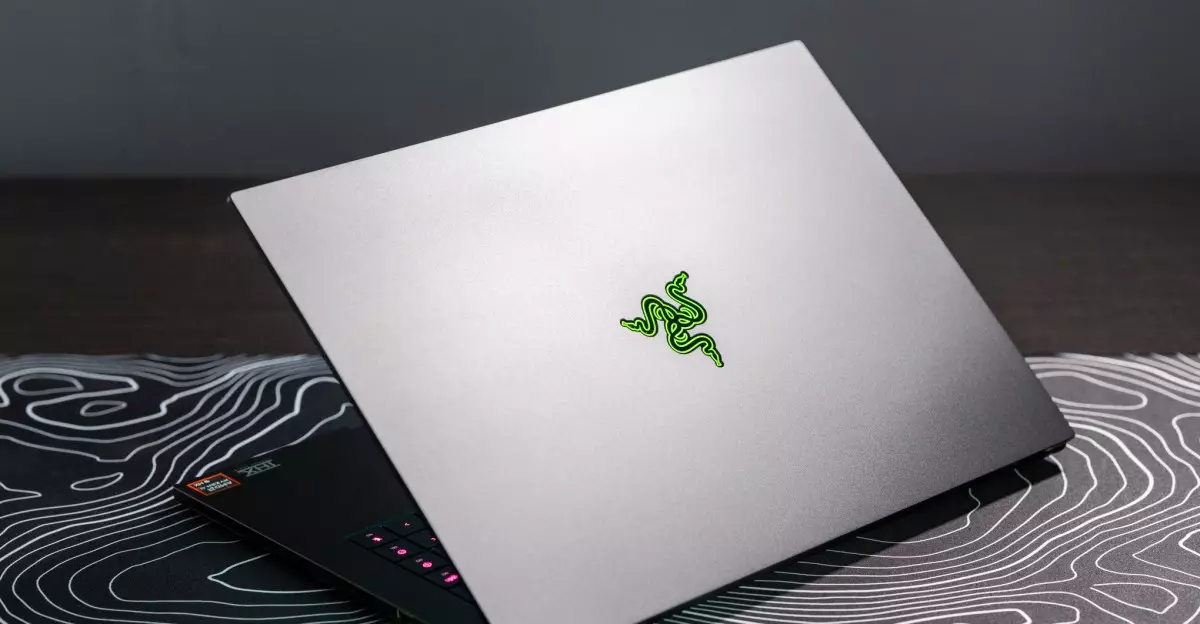The Razer Blade 16 has hit the market with much fanfare, presenting itself as a formidable player in the premium gaming laptop arena. Touted as a competitor to the MacBook Pro, it brings a sleek design and cutting-edge technology, specifically with the incorporation of the Nvidia RTX 5090 GPU. However, beneath its striking exterior lies a myriad of issues that could give even the most ardent fan pause. As I delved into its features and performance, I found myself questioning whether this laptop is the holy grail of gaming hardware or simply an expensive gamble.
The Allure of Lightweight Elegance
One of the most striking aspects of the Razer Blade 16 is its design. Shaving off a substantial 7mm in thickness and reducing its weight by 0.8 pounds compared to its predecessor gives it an appealing portability without compromising aesthetic quality. It’s not just about aesthetics, though; a lighter laptop means easier transport for gaming on the go, which is a critical factor for many gamers. However, this emphasis on a slender profile raises concerns about its cooling capabilities—a crucial element for any high-performance gaming machine.
Remarkable Display and Build Quality
The 16-inch OLED display boasting a resolution of 2560 x 1600 is nothing short of remarkable. With a refresh rate of 240Hz, it provides vibrant colors and smooth visuals that elevate both gaming and creative tasks. The keyboard, while generally user-friendly, introduces a peculiar set of macro keys that might disrupt the workflow for some users by interfering with standard function keys. It’s a design flaw that could have been easily avoided, signaling a disconnect in user experience consideration on Razer’s part.
Performance: A Double-Edged Sword
At the heart of the Razer Blade 16 is Nvidia’s RTX 5090—a cutting-edge GPU that promises enhanced performance and efficiency. Early tests indicate that its performance is commendable, especially in gaming scenarios leveraging DLSS technology. However, this comes with caveats. The initial review unit I received suffered from hardware issues, including bluescreens, leaving me unable to fully assess its performance reliability.
What’s more frustrating is the disparity in battery life during typical productivity tasks. Despite sports impressive specs, the Blade 16 struggles under the weight of light workloads, lasting less than six hours—a far cry from its competitors that excel in this area. The incorporation of the AMD Ryzen AI 9 HX 370 CPU is a promising feature, but its actual performance fails to match expectations when it comes to efficiency.
A Price Point That Raises Eyebrows
The Razer Blade 16 commands an eye-watering price tag of $4,499.99 for its top-tier configuration, a figure that invites careful consideration. In a market saturated with top-tier laptops, the question arises: is the investment worth it? For the same amount, one could acquire a capable MacBook Pro that excels in creative workflows with impressive battery longevity, coupled with an additional budget for a powerful gaming machine. This stark reality prompts a vital inquiry into Razer’s positioning: are they delivering a premium experience that justifies the price?
The All-in-One Argument
One angle that Razer promotes is the convenience of an all-in-one device, which can do it all—gaming, creative tasks, and general productivity. While the Blade 16 certainly excels in gaming performance and delivers a sharp and beautiful visual experience, it’s hard to ignore its shortcomings in reliability. A reliable laptop should be dependable across various applications, not only tailored for gaming but also suitable for daily tasks. This dichotomy between design allure and practical utility leaves room for doubt about its overall value.
While the Razer Blade 16 dazzles with its sleek design and potential for exceptional gaming performance, the accumulation of bugs and battery issues cast a shadow on its appeal. The marriage of beauty with function is often a challenging endeavor, and this laptop seems caught in that struggle. As I continue to test and analyze the Blade 16, I’m left grappling with its enticing promise versus its palpable shortcomings. For gamers pondering this enticing but expensive machine, it’s crucial to weigh both the immediate allure and the practical realities that could affect their long-term experience. The road ahead looks promising, but only time—and further testing—will reveal the lasting potential of the Razer Blade 16.

